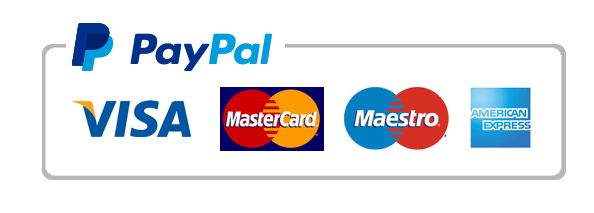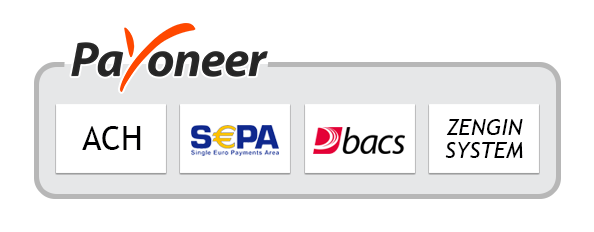Table of Contents
Introduction
New York, NY – March 11, 2025 – The global Spray-On Solar Cells Market is poised for significant growth, with projections indicating an increase from USD 1.5 billion in 2024 to USD 7.1 billion by 2034, reflecting a robust compound annual growth rate (CAGR) of 16.9% during the forecast period.
This surge is primarily driven by the escalating demand for renewable energy solutions and the pressing need to reduce carbon emissions. Spray-on solar cells offer a versatile and cost-effective alternative to traditional solar panels, enabling seamless integration onto various surfaces, including buildings, vehicles, and portable electronics. Their lightweight and flexible nature enhances their appeal across diverse applications.
The market’s popularity is further bolstered by technological advancements, such as the development of perovskite-based cells, which have improved efficiency and reduced production costs. Government incentives and supportive policies worldwide are also playing a pivotal role in promoting the adoption of renewable energy technologies, thereby creating ample market opportunities.
As urbanization intensifies and the shift toward electric vehicles gains momentum, the potential for spray-on solar cells to be applied in building-integrated photovoltaics and automotive sectors presents promising avenues for market expansion. However, challenges related to efficiency and durability compared to conventional silicon-based panels persist, necessitating ongoing research and development efforts to fully realize the market’s potential.

Key Takeaways
- Global Spray-on Solar Cells Market is expected to be worth around USD 7.1 Billion by 2034, up from USD 1.5 Billion in 2024, and grow at a CAGR of 16.9% from 2025 to 2034.
- Organic photovoltaics dominate the spray-on solar cells market, capturing a 45.3% share due to their light weight, cost-effectiveness, and flexibility.
- Flexible panels lead with a 52.2% market share, driven by demand for adaptable, thin-film solar solutions in various applications.
- Building-integrated photovoltaics (BIPV) hold a 42.2% share, as spray-on solar cells seamlessly integrate into facades, windows, and infrastructure.
- The residential sector accounts for 47.3% market share, fueled by increasing consumer adoption of innovative solar energy solutions.
- In 2024, North America held a 41.3% share of the Spray-on Solar Cells Market, valued at USD 0.6 Bn.
➤ For a deeper understanding, click on the sample report link: https://market.us/report/spray-on-solar-cells-market/request-sample/
Report Scope
| Market Value (2024) | USD 1.5 Billion |
| Forecast Revenue (2034) | USD 7.1 Billion |
| CAGR (2025-2034) | 16.9% |
| Segments Covered | By Technology (Organic Photovoltaics, Inorganic Photovoltaics, Perovskite Solar Cells), By Form (Flexible Panels, Rigid Panels, Transparent Panels), By Application (Building Integrated Photovoltaics, Portable Electronics, Transportation, Others), By End Use (Residential, Commercial, Industrial) |
| Competitive Landscape | Heliatek, SolarWindow Technologies, Nanoco Technologies, Tesla, Nanosolar, Oxford PV, New Energy Technologies, Enlight Renewable Energy, First Solar, Solaria Energy, PowerFilm Solar, UNSW Sydney, Applied Materials, SunPower, Dyesol |
➤ Directly purchase a copy of the report – https://market.us/purchase-report/?report_id=140861
Emerging Trends
- Advancements in Perovskite Materials: Researchers are focusing on perovskite-based solar cells due to their high efficiency and adaptability. These materials can be sprayed onto various surfaces, enabling integration into diverse applications from building facades to portable electronics.
- Integration with Artificial Intelligence: The use of artificial intelligence is accelerating the development of spray-on solar cells. AI aids in optimizing material compositions and deposition processes, leading to enhanced performance and faster commercialization.
- Automotive Applications: Automotive manufacturers are exploring the use of spray-on solar cells to power electric vehicles (EVs). This innovation could extend driving ranges and reduce reliance on charging infrastructure, addressing common concerns associated with EV adoption.
- Enhanced Production Techniques: New manufacturing methods, such as ultrafast spray techniques, are being developed to streamline the production of spray-on solar cells. These advancements aim to reduce costs and improve scalability, making the technology more accessible for widespread use.
- Environmental Considerations: Efforts are underway to address environmental concerns associated with spray-on solar cells, such as the use of lead in perovskite materials. Researchers are developing lead-free alternatives and exploring recycling methods to mitigate potential ecological impacts.
Use Cases
- Building-Integrated Photovoltaics (BIPV): By applying spray-on solar cells to building materials like windows and facades, structures can generate their own electricity. This integration offers a seamless and aesthetically pleasing approach to harnessing solar energy without the need for traditional bulky panels.
- Portable Electronics: Incorporating spray-on solar cells into devices such as smartphones and laptops can provide continuous power, reducing dependency on frequent charging. This technology enables gadgets to recharge using ambient light, enhancing user convenience and device sustainability.
- Automotive Industry: Applying spray-on solar cells to vehicles can convert sunlight into usable energy, potentially extending the driving range of electric cars and powering auxiliary systems. This innovation supports the shift toward more sustainable transportation solutions.
- Wearable Technology: Integrating spray-on solar cells into clothing and accessories allows for on-the-go charging of wearable devices. This application merges fashion with functionality, enabling users to maintain device power through everyday activities.
- Agricultural Applications: Spray-on solar cells can be applied to greenhouse structures, providing energy for lighting and climate control systems. This approach supports sustainable farming practices by utilizing renewable energy sources to enhance crop production.
Major Challenges
- Efficiency Limitations: Spray-on solar cells often exhibit lower energy conversion efficiencies compared to traditional silicon-based panels, affecting their competitiveness in the market.
- Environmental Stability: The materials used in spray-on solar cells, such as perovskites, can be sensitive to environmental factors like moisture, heat, and ultraviolet radiation, leading to potential degradation over time.
- Manufacturing Scalability: Achieving uniform and defect-free coatings on various substrates is technically demanding, affecting the overall performance and scalability of spray-on solar cells.
- Material Stability: Certain materials used in spray-on solar cells, such as perovskites, face stability issues when exposed to environmental conditions, hindering their long-term reliability.
- Integration with Existing Technologies: Incorporating spray-on solar cells into current energy infrastructures poses challenges due to compatibility issues and the need for new installation protocols.
Market Growth Opportunities
- Building-Integrated Photovoltaics (BIPV): Spray-on solar cells can be seamlessly integrated into building materials like windows and facades, enabling structures to generate their own electricity. This integration offers a visually appealing and space-efficient solution for urban environments, aligning with the growing demand for sustainable architecture.
- Portable Electronics: Incorporating spray-on solar cells into devices such as smartphones and laptops allows for continuous power generation, reducing reliance on traditional charging methods. This innovation caters to the increasing consumer demand for energy-efficient and self-sustaining electronic devices.
- Transportation Sector: Applying spray-on solar cells to vehicles, including cars and buses, can provide supplementary power for onboard systems or even contribute to propulsion in electric vehicles. This application supports the shift toward renewable energy in transportation, offering potential reductions in fuel consumption and emissions.
- Flexible and Wearable Applications: The flexibility of spray-on solar cells opens avenues for integration into wearable technologies and textiles, enabling clothing and accessories to harness solar energy. This development meets the rising interest in wearable electronics with extended battery life and new functionalities.
- Agricultural Enhancements: Spray-on solar cells can be applied to agricultural structures like greenhouses, providing a renewable energy source for lighting and climate control systems. This application supports sustainable farming practices by reducing reliance on non-renewable energy sources.
Recent Developments
1. Heliatek
- Heliatek, a German company specializing in organic photovoltaic (OPV) films, has been focusing on improving the efficiency and scalability of its solar films. In 2022, Heliatek announced advancements in its HeliaFilm technology, which is a lightweight, flexible solar film that can be applied to various surfaces, including buildings and vehicles.
2. SolarWindow Technologies
- SolarWindow Technologies is a leader in transparent solar coatings that can generate electricity from glass and plastic surfaces. In 2023, the company reported progress in its liquid electricity-generating coatings, which can be applied to windows and other surfaces.
3. Nanoco Technologies
- Nanoco Technologies, a UK-based company, specializes in quantum dots and nanomaterials. Nanoco announced advancements in quantum dot-based solar cells, which have the potential to improve the efficiency of solar energy capture.
4. Tesla
- Tesla, primarily known for its electric vehicles and solar panels, has been exploring next-generation solar technologies. Tesla announced plans to integrate solar roof tiles with improved efficiency and aesthetics. While Tesla has not directly entered the spray-on solar cell market, its innovations in solar energy storage and integration contribute to the broader renewable energy ecosystem.
5. Nanosolar
- Nanosolar, a pioneer in thin-film solar technology, has been relatively quiet in recent years. However, the company announced advancements in its printed CIGS (Copper Indium Gallium Selenide) solar cells, which are lightweight and cost-effective.
Conclusion
Spray-on Solar Cells represent a significant advancement in renewable energy technology, offering flexibility and adaptability across various applications. This anticipated expansion is driven by the growing demand for renewable energy solutions and the versatility of spray-on solar cells in integrating with diverse surfaces. However, challenges such as lower energy conversion efficiencies and environmental stability concerns persist. Ongoing research and development efforts are crucial to enhance performance and durability, ensuring that spray-on solar cells can effectively contribute to a sustainable energy future.
Discuss Your Needs With Our Analyst
Please share your requirements with more details so our analyst can check if they can solve your problem(s)





